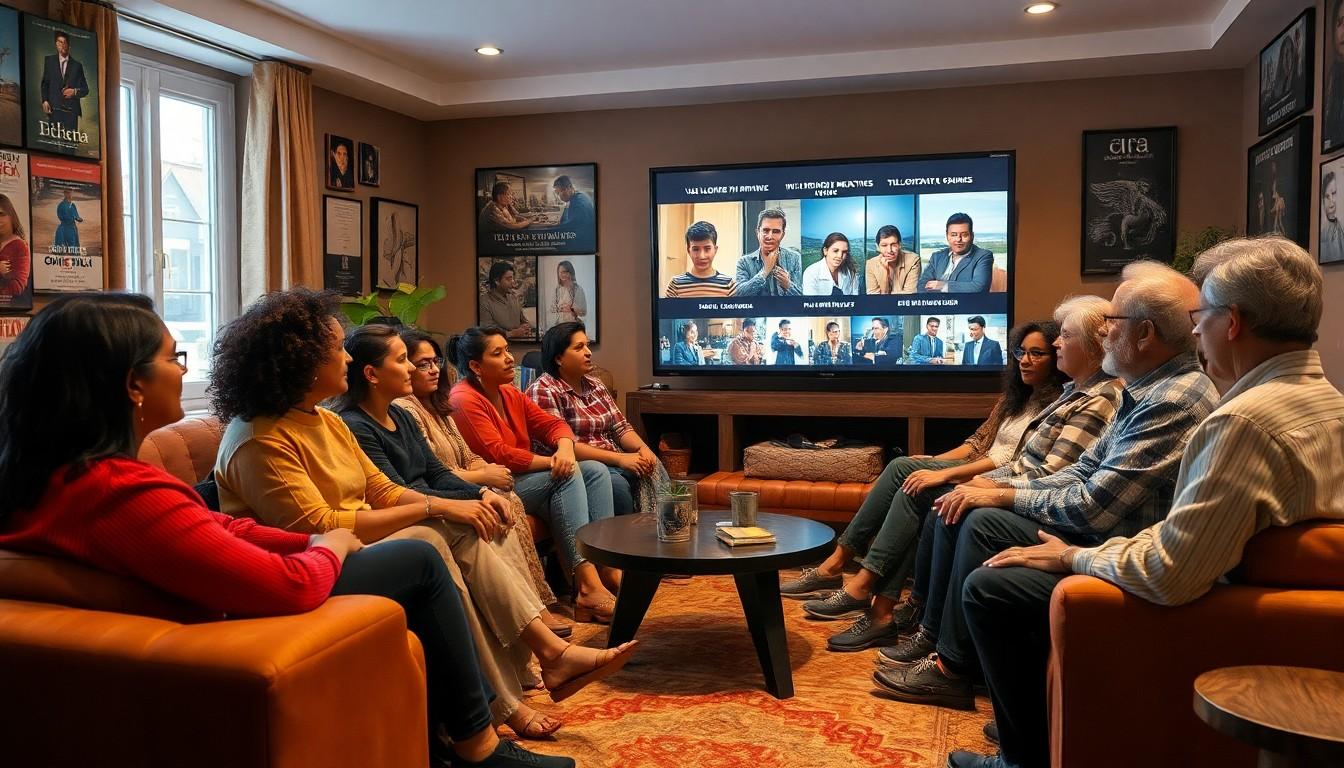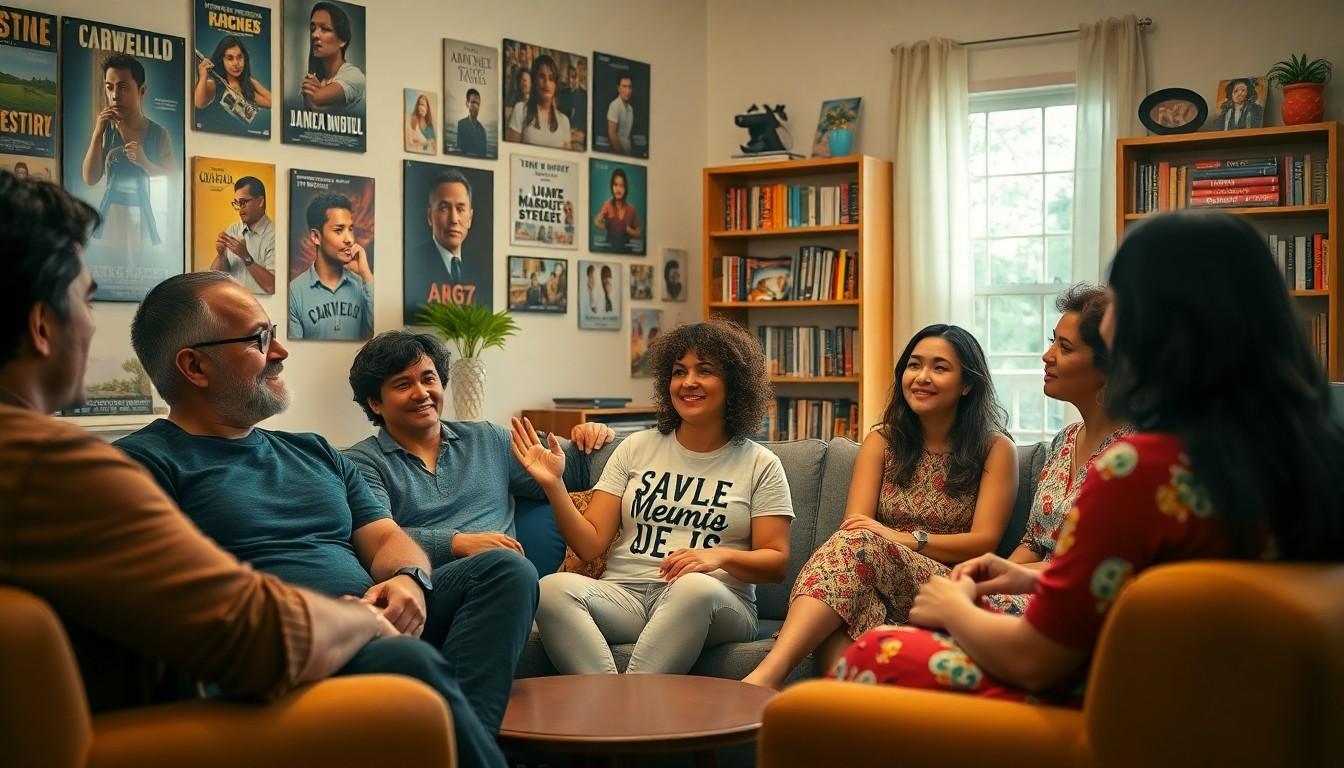In a world where streaming platforms reign supreme, films have become more than just entertainment—they’re a window into the rich tapestry of culture and gender. As viewers binge-watch their favorite series, they often overlook the profound messages woven into the narratives. But what if they could dive deeper and explore the nuances of identity and society through the lens of cinema?
Exploring culture and gender through film online isn’t just a pastime; it’s a journey that can spark conversations, challenge perceptions, and even inspire change. Whether it’s a quirky indie flick or a blockbuster sensation, films hold the power to reflect society’s complexities. So grab your popcorn and get ready to unravel the layers of meaning that await. It’s time to laugh, learn, and maybe even shed a tear—all while discovering the vibrant stories that shape our world.
Read Exploring Culture and Gender Through Film Online
Films reflect diverse cultural narratives and gender representations, playing a crucial role in shaping societal norms. Genres such as drama, documentary, and animation often explore themes related to identity, belonging, and inequality. Viewers encounter portrayals of various communities, experiences, and challenges, deepening their understanding of human behavior and social dynamics.
Gender representation in film varies significantly across cultures. Some films challenge traditional gender roles by depicting strong female characters or showcasing male vulnerability. These representations can disrupt stereotypes and foster greater empathy and awareness among audiences. Specific films address intersectionality, highlighting how race, class, and sexuality intersect with gender in unique ways.
Cinematic storytelling possesses the power to critique sociopolitical structures. Many filmmakers use narrative arcs to address issues like sexism, racism, and homophobia. By engaging with these themes, films can provoke public discourse and influence cultural attitudes, fostering greater social change.
The role of film festivals and online platforms enhances accessibility to diverse perspectives. These venues prioritize global storytelling, presenting narratives from underrepresented filmmakers. Audiences can explore how different cultures interpret gender and societal issues, enriching their understanding of the world.
Audience reactions shape the ongoing conversation around culture and gender in film. Critical reception influences how films are perceived and can drive further discussion on the topics presented. As viewers engage critically with content, they contribute to evolving narratives surrounding identity and representation in cinema. This engagement not only increases awareness but also encourages the exploration of personal beliefs and biases.
Significance of Online Platforms
Online platforms play a crucial role in expanding access to films that explore culture and gender. Viewers can engage with diverse narratives that might not be available through traditional media.
Accessibility of Diverse Narratives
Accessing a wide range of films is easier than ever through streaming services. These platforms often feature independent and international films that highlight unique cultural perspectives. Audiences can discover stories that challenge mainstream portrayals, leading to a richer understanding of gender and identity. Many online services offer curated lists focused on underrepresented voices. Engaging with these selections invites conversations around cultural nuances and intersections related to identity.
Global Perspectives on Gender
Films available on online platforms showcase global perspectives on gender. Cinematic portrayals from different cultures depict varying gender roles and societal expectations. Viewers encounter portrayals that either reinforce or challenge stereotypes. Many films highlight female empowerment, while others delve into male vulnerability. By watching these narratives, audiences comprehend the complexity of gender beyond their immediate environment. The diversity of storytelling fosters empathy and broadens horizons, enabling deeper discussions around gender issues across cultures.
Film Analysis Techniques
Film analysis techniques reveal underlying themes related to culture and gender. These techniques guide viewers in critically engaging with cinematic narratives, uncovering deeper meanings and societal implications.
Themes of Culture and Gender
Exploring themes of culture and gender in film unlocks diverse narratives. Each theme often reflects societal norms and challenges existing ideologies. For instance, films showcase the struggles of marginalized communities, highlighting the intersection of cultural backgrounds and gender identities. Conflict and resilience serve as central motifs in many stories, guiding audiences through complex character arcs. By connecting personal experiences to broader social constructs, films encourage viewers to empathize with various perspectives on identity and belonging.
Representation and Stereotypes
Representation and stereotypes play critical roles in shaping audience perceptions. Films often reinforce traditional gender roles or present alternative narratives that challenge expectations. Notable examples include films featuring strong female protagonists who defy societal norms, offering fresh portrayals of empowerment. Conversely, some productions perpetuate stereotypes that can distort understanding of different cultures and genders. Critically analyzing these portrayals reveals how they impact societal attitudes toward race, gender, and sexual orientation, emphasizing the importance of diverse storytelling in cinema.
Key Films to Explore
Films that delve into culture and gender provide impactful insights. Various genres and storytelling techniques reveal unique narratives that engage audiences meaningfully.
Impactful Documentaries
Documentaries such as
13th and
Disclosure illustrate systemic racism and LGBTQ+ issues.
13th examines the intersection of race and the criminal justice system, demonstrating how laws have been shaped by historical oppression.
Disclosure explores transgender representation in Hollywood, highlighting how these portrayals affect societal perceptions. Both films invite viewers to reflect on pressing social matters, creating space for critical discussions. They engage audiences in powerful ways, offering educational content alongside emotional resonance. Documentaries on streaming platforms often portray underrepresented voices, enriching cultural discourse.
Fictional Works That Challenge Norms
Fictional films such as
Little Women and
Moonlight disrupt traditional gender roles and represent diverse identities.
Little Women reimagines women’s agency, presenting strong female characters who pursue their passions in various societal contexts.
Moonlight challenges norms surrounding masculinity through its intimate exploration of a Black man’s life and identity. These films provoke thought and foster empathy by revealing multifaceted characters and their journeys. Additionally, such narratives challenge stereotypes, encouraging viewers to reconsider preconceived notions of gender and identity. They play a crucial role in cultivating understanding and connection across cultural divides.
Gender and Culture in Movies
Exploring culture and gender through film offers a powerful lens into societal dynamics. As viewers engage with diverse narratives they not only entertain themselves but also challenge their own perceptions and biases. This journey through cinema fosters empathy and understanding, highlighting the importance of representation in shaping cultural attitudes.
Online platforms have democratized access to films that might otherwise remain hidden. By embracing stories from underrepresented voices audiences can broaden their horizons and spark vital conversations about identity and belonging. The impact of these films extends beyond the screen encouraging deeper reflections on societal norms and personal beliefs.
Ultimately the exploration of culture and gender in film is an ongoing dialogue. Each viewing experience contributes to a richer understanding of the complexities of human experience and the narratives that define us.


